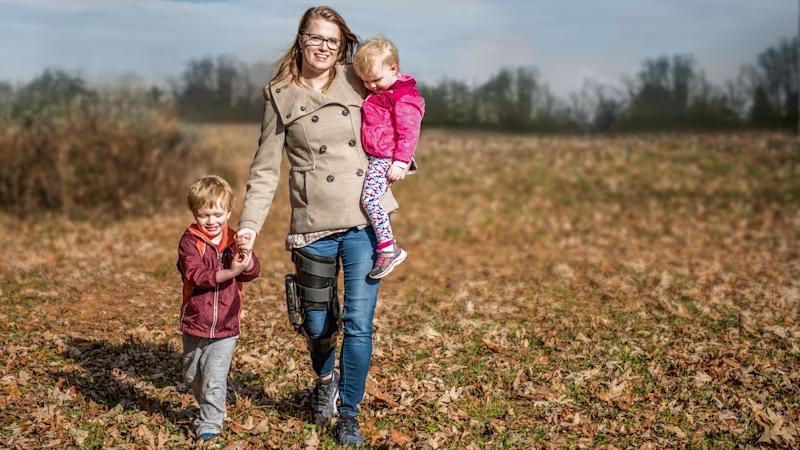Stroke
Ottobock uses modern device solutions to pursue the goal of enhancing the focus on rehabilitation following acute treatment after a stroke.
Frequency, symptoms and rehabilitation
In about 79 per cent of all cases, a stroke is caused by the blockage of a blood vessel that supplies the brain, for example, due to a blood clot. This leads to insufficient blood circulation.
Almost 13 per cent of patients are affected in precisely the opposite manner due to damaged vessels and the like, namely a haemorrhage in the brain. In either case, the supply of blood to certain regions of the brain is no longer sufficient due to a local circulatory disorder.
Ottobock supports and orthoses

Frequency
According to the latest estimates, about 270,000 first-time strokes occur in Germany each year. Around half of the surviving patients still have a permanent disability a year after their stroke and depend on the help of others. Nearly 1.3 million Germans are now affected by the consequences of this illness. The number of stroke patients is expected to increase dramatically in the coming decades as the population ages. Based on reliable projections, the Erlangen stroke registry predicts there will be 3.5 million patients and direct treatment costs amounting to 108 billion euros. This means strokes are one of the biggest challenges facing Germany’s healthcare system.
Symptoms
The symptoms of a stroke and their severity can vary considerably between individuals. They include:
Impaired vision
Limited field of vision
Disturbances in spatial perception, double vision
Speech and speech comprehension disorders
Paralysis, numbness
Impaired sense of touch
Drooping at the corner of the mouth – the leg and arm may exhibit similar symptoms (drop foot and drop hand)
Shoulder pain
Unstable knee joint function while standing
Torso instability
Dizziness with uncertain gait
Spasticity in various forms and degrees of severity
Rehabilitation
A phased model set up by Germany’s Bundesarbeitsgemeinschaft für Rehabilitation (Federal Working Group for Rehabilitation) is used in the field of neurological rehabilitation. First, the patient’s need for assistance is assessed by the attending doctor and therapist. Depending on their needs, a specific rehabilitation phase is considered. Neurological rehabilitation is divided into the following phases:
Phase A: acute medical treatment
Phase B: medical and therapeutic rehabilitation, early rehabilitation (in some cases, there are still extreme limitations (coma) for the most severely affected patients, who can only participate in treatment to a limited extent)
Phase C: medical and therapeutic rehabilitation (impaired self-sufficiency)
Phase D: medical and therapeutic rehabilitation (mobility at ward level possible)
Phase E: medical and occupational rehabilitation (reintegration, reorientation if applicable)
Phase F: curative care, maintenance measures
There have been considerable advancements in acute care over the last few years. Ottobock uses modern device solutions to pursue the goal of enhancing the focus on rehabilitation following acute treatment. From wheelchairs that provide support in the early rehabilitation phase, to products for drop foot (orthoses, functional electrical stimulation (FES) in the form of surface stimulation or an implant), through to orthoses that stabilise the shoulder, knee and wrist – Ottobock offers a broad selection of modern product solutions.
Back to everyday activities: three steps to an Ottobock orthosis
- Here you’ll find an overview of all the orthoses and supports that could potentially help you. Take the list with you to your next doctor’s appointment.
- Talk to your doctor about which orthosis is best suited to your symptoms and condition. Your doctor can then write you a prescription for the appropriate orthosis.
- Take your prescription to a medical supply company. They’ll give you your new orthosis and adjust it to fit your exact body measurements.
